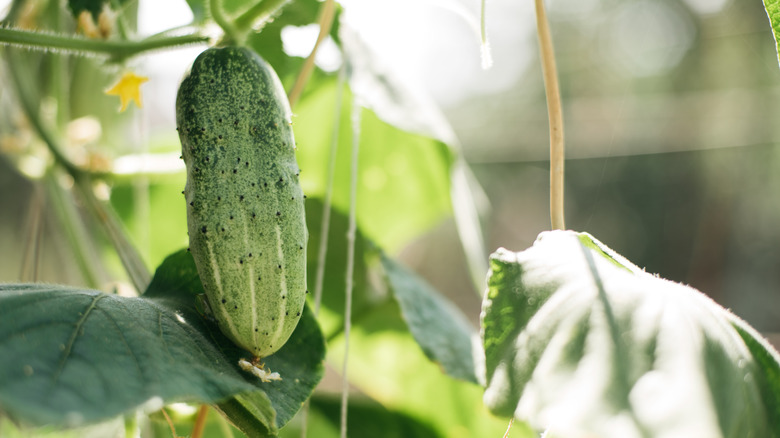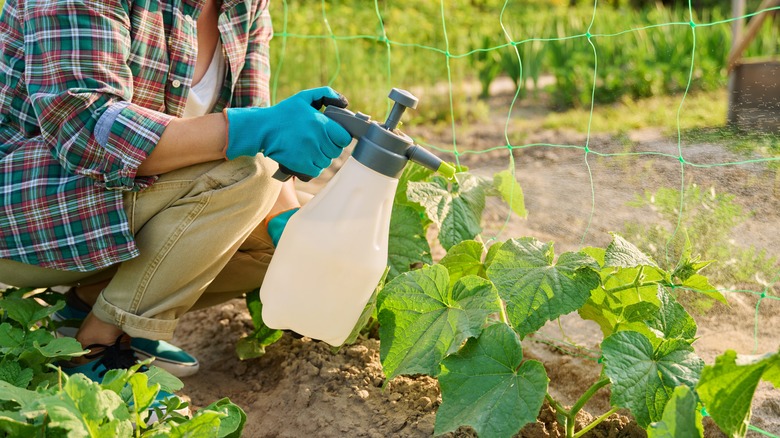The Hydrogen Peroxide Hack That Will Help Your Cucumbers Thrive
The secret to making your cucumbers thrive is hidden in your medicine cabinet. There are brilliant ways that hydrogen peroxide can be used in your garden — it's a long-favored gardening favorite. This naturally occurring chemical is affordable and readily available. The popular household disinfectant is also perfect for protecting your cucumbers against harmful fungus, such as powdery mildew. According to a 2008 study from the International Journal of Horticultural Science, hydrogen peroxide is an effective fungicide against the Podoshaera fusca fungus, which can cause powdery mildew in cucumbers.
During the course of the IJHS study, researchers sprayed the leaves of a cucumber plant and amended the plant's soil with organic fertilizers, such as compost and seaweed extract. After application, they observed a decrease in disease severity, with a drop from around 90% to 12% throughout separate winter experiments in 2005 and 2006. With the reduced severity of powdery mildew, researchers observed higher growth plus yielded earlier harvests, especially in comparison to cucumbers with non-organic treatments. The encouraging result shows hydrogen peroxide is an ideal way to guard your cucumber against infection and death resulting from the fungus, so if you want healthy, thriving plants, here's how to use this household product in the garden.
Protecting cucumbers with hydrogen peroxide
It's easy to control powdery mildew with hydrogen peroxide on your cucumber plants. You should strive to use the right amount on your plants, because too little won't be effective. However, too much peroxide use can damage a plant's roots or leaves. YouTuber Gary Pilarchik, also known as The Rusted Garden, suggests his own solution with 3% hydrogen peroxide, combining 4 to 8 ounces of hydrogen peroxide with 1 gallon of water. He recommends spraying hydrogen peroxide every seven days. If you're wary of trying it or aren't sure how your plants will react, do a test on a single plant and watch for any reactions.
You can also follow the IJHS study's application process, spraying a similar solution three times total for new plants, once after transplanting, then again in the following two weeks after transplant. Powdery mildew often appears on older leaves, and can spread very quickly. Failure to treat the fungus can result in yellowing leaves, which eventually fall off and die, so keep an eye on your cucumbers. With this in mind, you can examine your leaves for white powder to determine if your newly-planted cucumbers need help, then treat accordingly.

